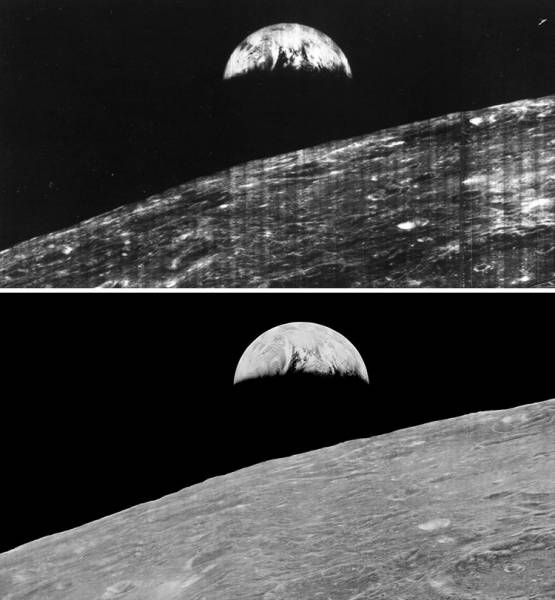
On Aug. 23, 1966, NASA's Lunar Orbiter 1 snapped the first photo of Earth as seen from lunar orbit. While a remarkable image at the time, the full resolution of the image was never retrieved from the mission's data. In 2008, this earthrise image was restored by the Lunar Orbiter Image Recovery Project at NASA Ames Research Center. (NASA/Ames Research Center/Lunar Orbiter Image Recovery Project)
Saturday is the anniversary of the Apollo 11 moon landing. Throughout the Apollo missions, NASA astronauts brought back more than 2,000 rock and soil samples from six landing sites.
Some of those samples have ended up at the University of Notre Dame where a team of geologists studies the moon.
When Apollo 11 touched down on the moon and astronauts were able to walk around, scientists gained a huge amount of data.
Astronaut Neil Armstrong called it "One giant leap for mankind," part of that giant leap was the lunar rocks and soil that six of the Apollo missions brought back.
The moon rocks that scientists study are from Apollos 11, 12, 14, 15, and 17 -- collected between 1969 and 1972.
“Before they launched the Apollo missions they did as much detailed work as they could to figure out what types of rocks were there. And so they selected their locations very precisely based on that,” Dave Burney says.
Three geologists at Notre Dame -- Burney, Karl Cronberger and Mike Torcivia -- work with the samples to study how the moon formed, what it’s made up of, and how those resources might be used for future space exploration.
The most accepted theory of how the moon formed is the giant-impact hypothesis or the "Big Splash."
That theory says more than 4.5 billion years ago a Mars-sized planet hit the Earth and broke into a bunch of pieces that formed a disk around the Earth.
Then those pieces came together to form the moon. That coming together was really hot, “due to the heating as it coalesced, there was a massive amount of melting that went on," Burney says. "And so the moon started off as mostly or entirely molten. We call that the Lunar Magma Ocean, or LMO for short.”
So then you have this body orbiting around Earth that’s all liquidy. It hardened and crystalized in three layers.
Burney studies the inner layer -- the moon’s mantle. Torcivia studies the crust -- the part of the moon you can see when you look in the sky. Cronberger studies the gooey layer in between the mantle and the crust -- known as the KREEP (Potassium, Rare Earth Elements, and Phosphorus; named for what the layer is rich in). It was the last to crystalize from the LMO as the moon cooled.
For the two inner layers, scientists don’t have pure samples. What they have are samples from the surface that either churned up from underneath or were part of that layer before or during the impact.
“What I have to work with is KREEP basalts. These are basaltic rocks that have been ‘contaminated’ with the KREEP component,” Cronberger explains.
Burney studies mainly dust from the lunar surface that came from the inside. He takes the dust, dissolves it in an acid and studies that -- he calls it "moon juice."
Because moon rocks so rare on Earth, these samples are highly regulated by NASA and scientists are very careful with the research they do.
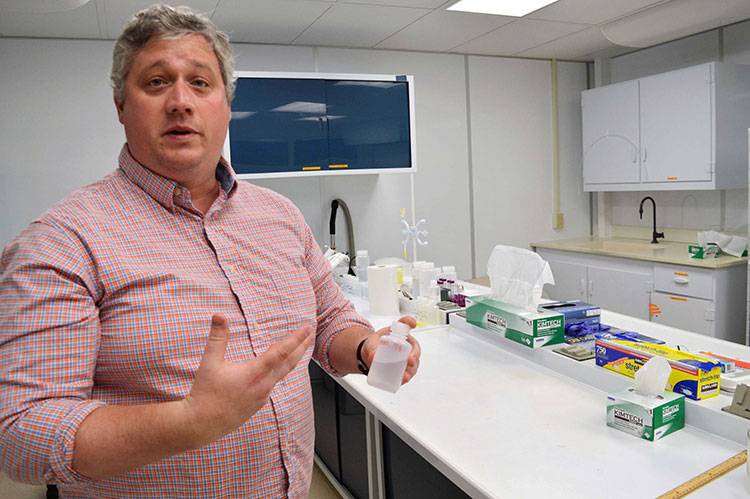
Dave Burney holds a sample of "Moon juice," particulate sample from the lunar surface dissolved in acid. (Jennifer Weingart/WVPE Public Radio)
And scientists don’t just have a big ole’ Moon rock that they work with. They either get dust, or thin sections -- pieces of rock cut from the whole, catalogued, then glued onto microscope slides.
All of them are labeled with where they came from.
“So this one is from Apollo 11," Burney says. "You’ll see it starts with one on the front. So this is initially 10050 comma, and so that's the 165th daughter sample that they took off of 10050.”
They get the thin sections in these tubes that look sort of like oversized screw-top film canisters. When they’re not working with them, the samples are locked in a safe.
At Notre Dame, those sections are first put under a microscope and photographed meticulously. Then they are put in an instrument called a microprobe. It tells what elements the visible crystal structures are made of Cronberger says.
“What’s fun is you can look at this and you instantly start to see, OK, we can see like the cores of these huge pyroxene crystals are very magnesium," Cronberger says. "And it’s like 'OK, why could that be?'”
They use that to figure out the best candidates for laser ablation. For that, Croneberger and Torcivia take their samples and shoot them with lasers. It drills tiny holes sending matter into a mass spectrometer which tells how much of what elements are in that portion of the sample.
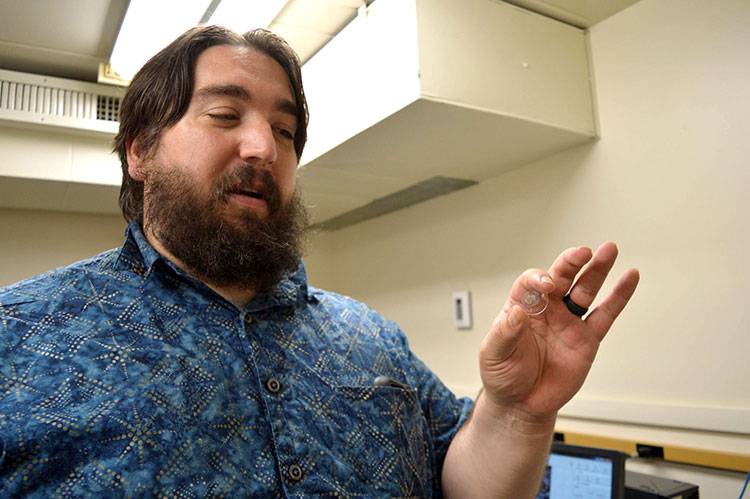
Karl Cronberger holds a slide with a thin section of moon rock on it in a lab at the University of Notre Dame. (Jennifer Weingart/WVPE Public Radio)
Burney uses the mass spectrometers to find out the elements in his moon juice samples, as well.
You can also use the mass spectrometer to deduce the age of samples, using isotope ratios.
“You measure them all at once," Torcivia explains, "and depending on what ratios it spits out you can get an age from that.”
The geologists said all the data are great, but what needs to happen next is more missions to the moon, and more sample gathering.
NASA has some plans to go back to the moon or to get to Mars using the moon for its resources and a pit stop.
“So if you’re launching from Earth you don’t have to take everything you need to get all the way from Mars," Burney says. "You can stop at the moon refuel on oxygen, refuel on fuel, then carry on from there.”
“It’s only a three day trip to the moon," Torcivia adds. "It’s a six to nine month trip to Mars and it’s a lot easier to escape the moon’s gravity than Earth’s.”
They said any mission like the Apollos is unlikely to ever happen again, but the time is ripe for a new age of space exploration.
 DONATE
DONATE

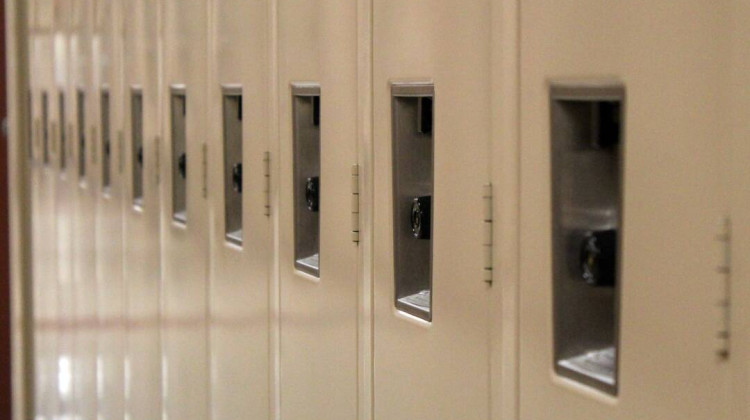
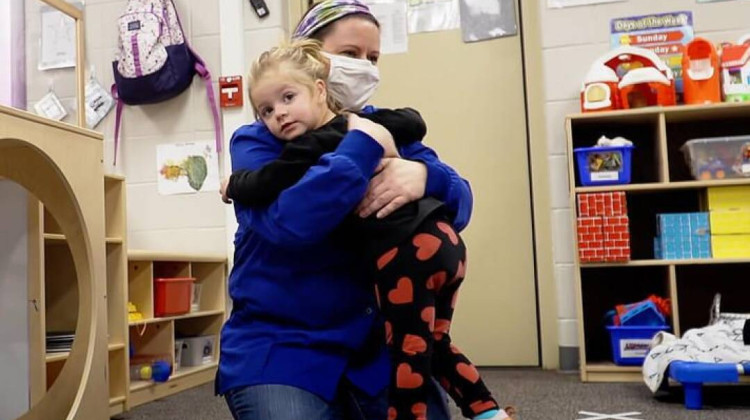
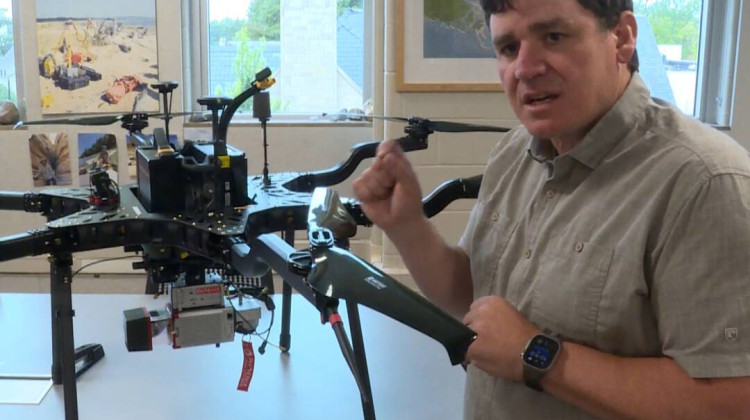
 View More Programs
View More Programs


 Support WFYI. We can't do it without you.
Support WFYI. We can't do it without you.